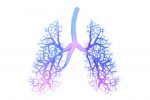Natural Plant Antioxidant Protects Cells From Processes of IPF

Kyrylo Glivin/Shutterstock
A molecule thought to be a natural antioxidant, pterostilbene (PTE) prevented signs of idiopathic pulmonary fibrosis (IPF) from occurring in a cell model of the disorder by regulating a protein called ASIC2, a study reported.
This finding suggests that PTE and other compounds targeting the ASIC2 protein may have the potential to become future IPF treatments.
The study, “Pterostilbene alleviates pulmonary fibrosis by regulating ASIC2,” was published in the journal Chinese Medicine.
Specialized cells called fibroblasts largely drive IPF progression. In response to the TGF-beta 1 protein, fibroblasts grow into myofibroblasts, which secrete large amounts of components of the extracellular matrix (ECM), the mix of proteins and other molecules that provide tissues with structure but also contribute to the scarring — fibrosis — characteristic of IPF.
Some studies have shown that PTE — an antioxidant found in blueberries, grapes, and other fruits — can ease fibrosis to a certain degree in mice, although exactly how remains unclear.
Scientists at the Zhongnan Hospital of Wuhan University, in China, examined PTE’s mechanism of action in two lung-derived human cell lines — normal alveolar epithelial cells (AECs; cells that line tiny air sacs in the lungs where gases are exchanged) and a lung cancer cell line called A549.
As expected, adding TGF-beta 1 to these cells triggered several changes that contribute to IPF development. Specifically, cells grew migratory, underwent a disease-associated shift in cell type called the epithelial–mesenchymal transition (EMT), and excessively secreted ECM.
TGF-beta 1 also largely prevented an orderly form of cell death called apoptosis (needed to prevent toxic accumulation of ECM and disorganized cell migration), and disrupted autophagy (a form of cellular recycling needed to maintain healthy processes), in each of these cell types.
Treating the cells with PTE, however, appeared to rescue all these aberrant effects. The addition of PTE largely prevented cell migration, EMT, and excess ECM secretion or accumulation, while promoting normal apoptosis and autophagy processes.
Researchers then looked for proteins that PTE might influence or interact with by examining how PTE’s use affected gene expression. PTE significantly reduced the levels of a protein called ASIC2 (acid sensing ion channel subunit 2), which appears to be similarly damaging to cells as TGF-beta 1, stimulating the EMT and ensuing ECM accumulation, while preventing apoptosis and autophagy.
Based on the results, the researchers suggested that PTE may limit pulmonary fibrosis caused by TGF-beta 1 by regulating ASIC2.
“PTE may be served as a promising strategy for IPF treatment,” the team wrote, adding that the “results suggest that ASIC2 inhibitors may have potential in the development of IPF treatments in the future.”
Researchers noted that “further investigation of the activity and mechanism of PTE” in a living body (in vivo research), such as an animal disease model, is needed.








